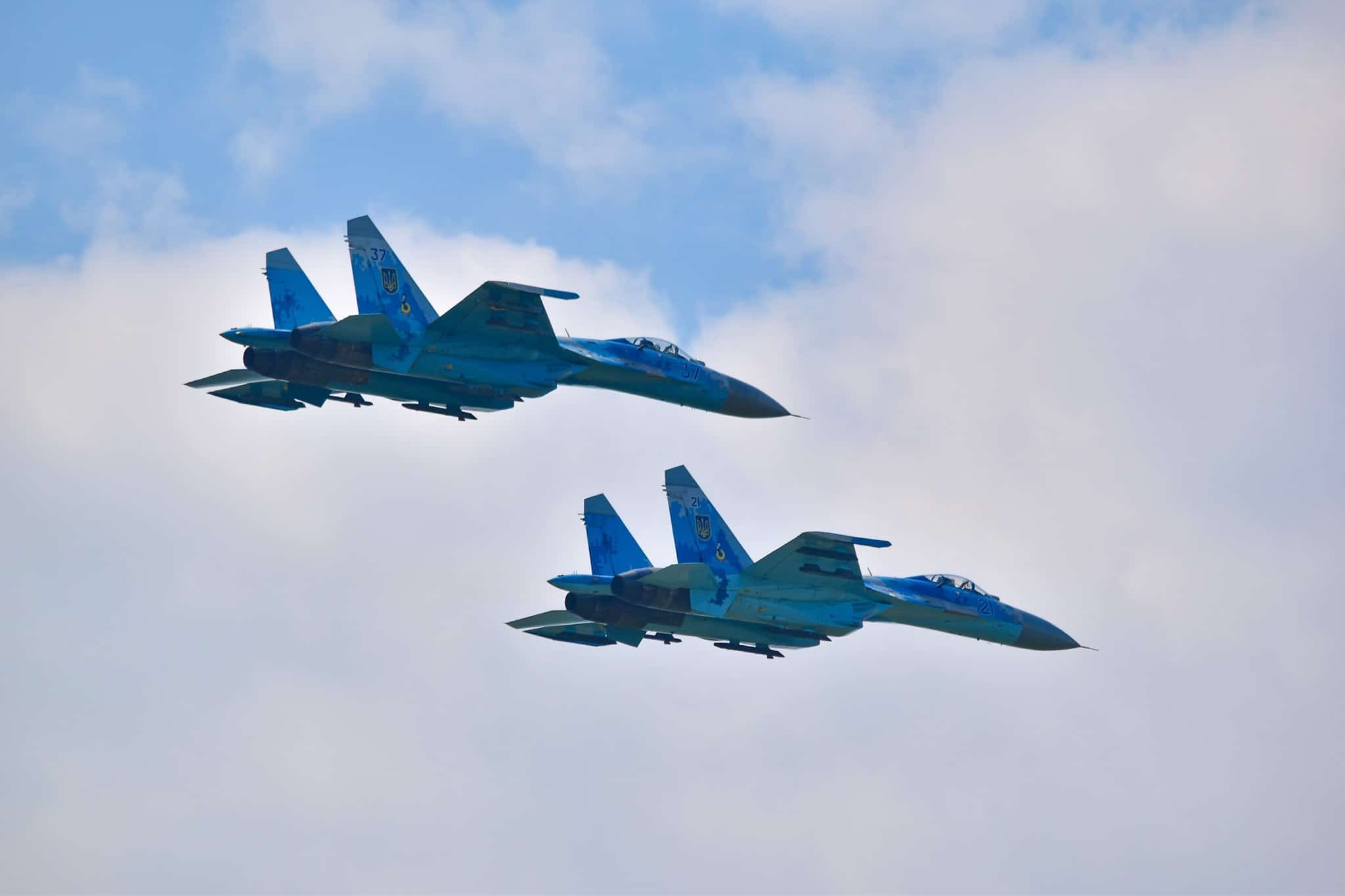
Russia has intensified its pursuit of Ukrainian Armed Forces combat aircraft, and the invaders possess a wide range of weapons for this purpose. Such increased activity raises questions about various ways to protect Ukrainian aviation.
Official reports of Russian strikes on Ukrainian air bases in different regions have surfaced from time to time.
Russian propaganda has also recently claimed the destruction of Ukrainian aircraft on airfields, along with the publication of relevant videos.
Through these attacks, the Russians aim to neutralize Ukrainian combat aviation, which continually operates on the frontlines, inflicting significant losses on invading troops and targeting important military installations.
After the Ukrainian Air Force acquires F-16 fighters, the primary task will be to ensure the protection of these aircraft since they will become a priority target for Russian strikes.
It’s worth noting that the invading army possesses a wide array of weapons for launching attacks across the entire expanse of Ukraine. This includes cruise missiles such as the Kalibr, which can be launched from ships, submarines, and aircraft, as well as subsonic Kh-101 and Kh-555, along with the Soviet-era supersonic Kh-22. Additionally, the Russians employ ballistic and cruise missiles from the Iskander mobile missile system.
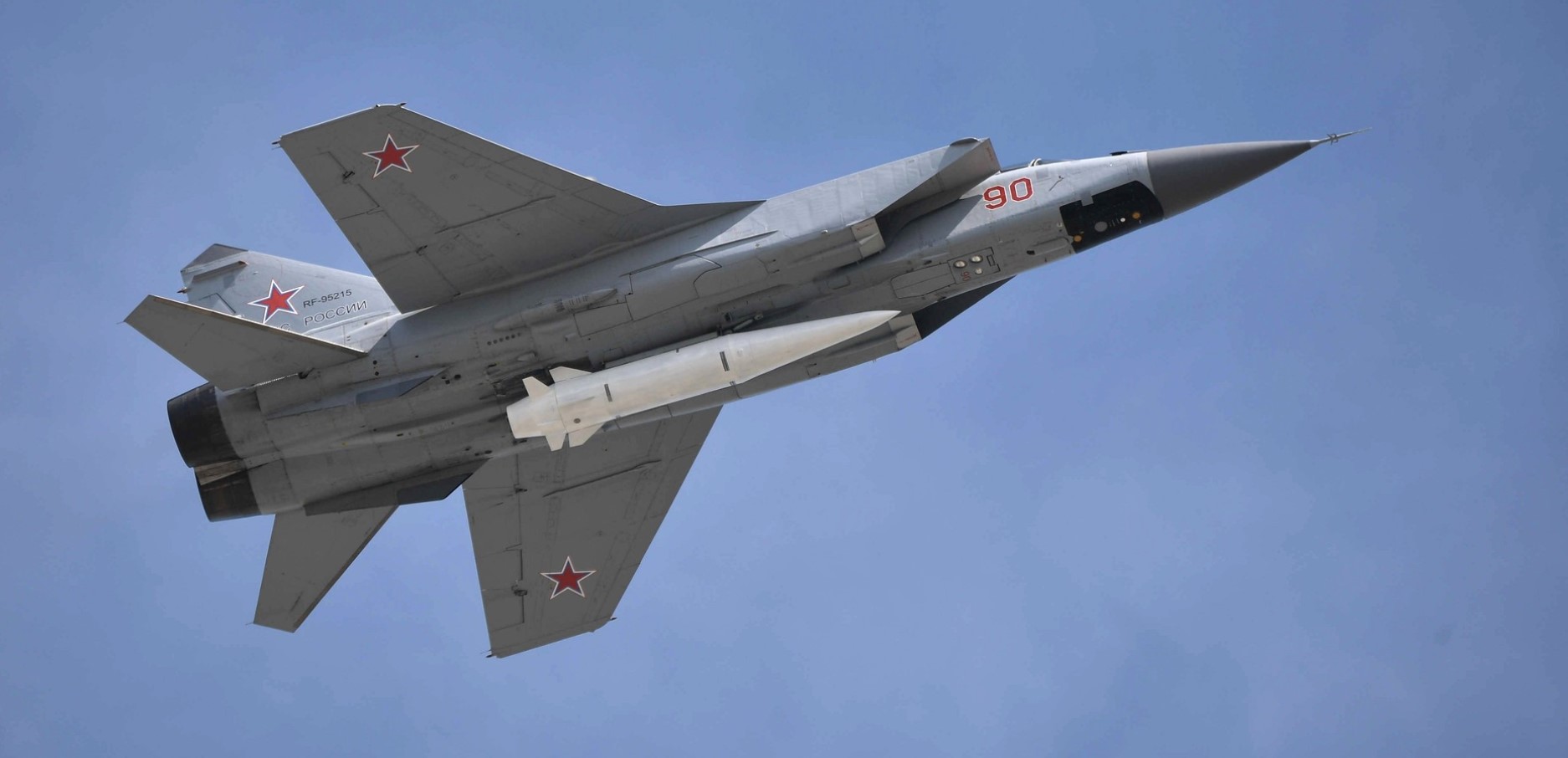
Russian MiG-31K modified interceptors are also equipped to deploy Kh-47M2 Kinzhal hypersonic missiles capable of targeting fortified facilities, including those situated underground at specific depths.
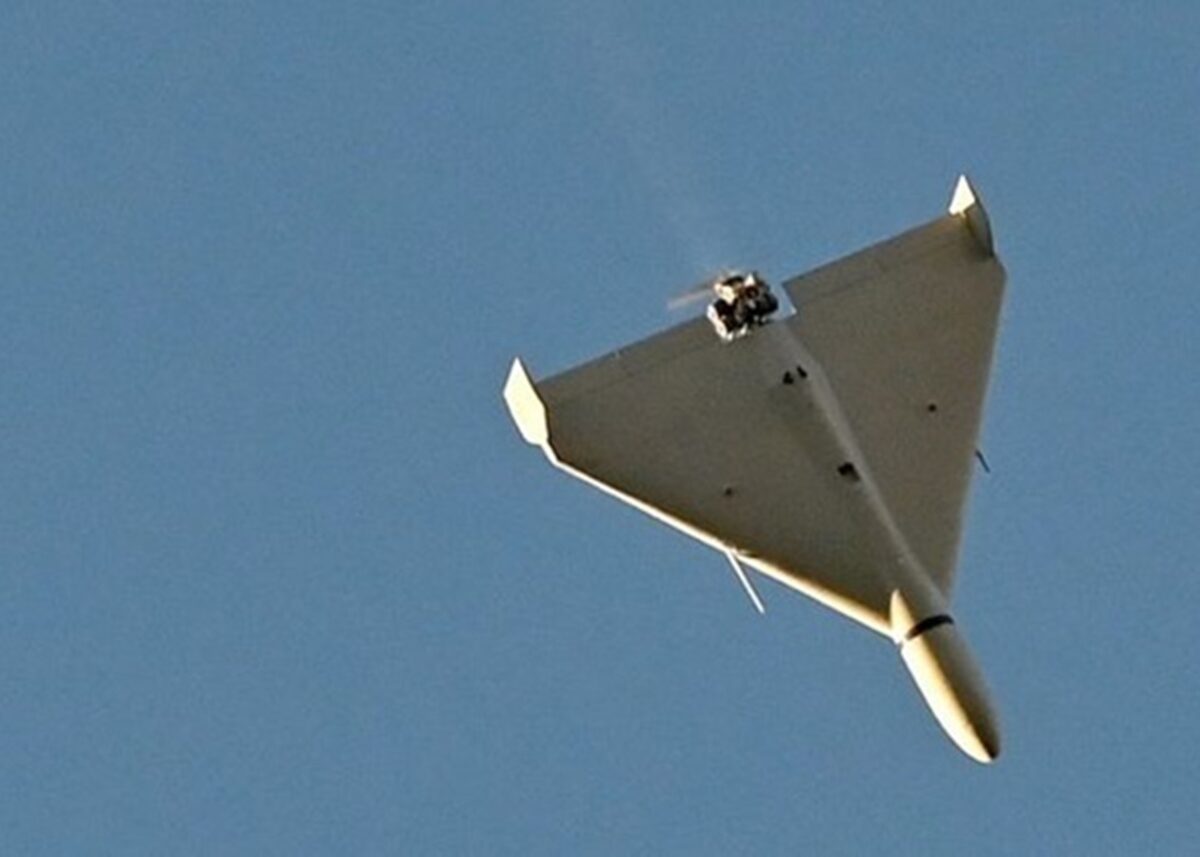
Since the autumn of 2022, Iranian Shahed-131/136 kamikaze drones, known as Geran-1/2 in the Russian army, have become part of this arsenal. Currently, the Russian Federation is working on localizing the production of these UAVs within its own territory, which means the threat from their use will persist for an extended period.

Another concerning element, particularly in frontline areas and regions bordering the Russian Federation, is the Russian kamikaze Lancet loitering munition.
In addition to runways, there are designated areas for dispersing aircraft at airbases. These areas are designed to reduce the risk of aircraft destruction during air strikes and are equipped with parking spaces, taxiways, protective shelters, and other necessary structures. The choice of layout and engineering design at the airfield is typically determined during construction, taking into account the types of aircraft that will be stationed there.

To protect aviation assets, shelters are constructed at the airfield. These can be either ground-based or underground. The most commonly used are open-type ground shelters, such as aircraft parking dikes and protective aircraft shelters, as well as closed-type reinforced concrete shelters. During the Soviet era, arched reinforced concrete shelters and dikes were erected at military airfields, many of which are still in use today.

The dimensions of earth dike shelters are determined by the size of the aircraft they are intended to protect. The height of the cover must ensure the protection of all protruding parts of the aircraft. These shelters are designed to reduce the impact of shock waves from explosions and primarily serve to safeguard military equipment from conventional weapons. They are typically covered with fire-resistant camouflage nets.


Arched reinforced concrete shelters are of the closed-type and are constructed within aircraft dispersal zones, mainly for tactical aircraft. A typical shelter of this kind consists of reinforced concrete semi-arches with stiffening ribs and has a wall thickness of 60 cm. The dimensions of the main space, where the combat aircraft is housed, are typically 12.9×28 meters, although there are also shorter and longer variants of these individual shelters.

The concrete structure is covered with soil on the outside. Each shelter is equipped with robust sliding gates and a gas discharge channel in the rear wall to enable the jet engines of the aircraft to start directly within the shelter. A substantial thickness of reinforced concrete flooring and ground coating is designed to protect the aircraft and its personnel from damage during gunfire, missile strikes from the air, and bomb fragments and shockwaves.
For storage, operational maintenance, and routine aircraft repairs, facilities known as hangars are used. These hangars can vary in size depending on the type of aircraft they are designed for.

The primary area of the hangar is designated for equipment placement and related work, often with extensions for accommodating personnel, equipment, or spare parts warehouses. In Ukrainian airfields, the base hangars mostly retain the design of long-term structures inherited from the Soviet era.

However, military aviators in different countries utilize quickly deployable hangars of various shapes and designs to house individual aircraft or helicopters. These structures encompass a range of framed or frameless designs with metal or other types of material for covering.
Additionally, there are frame-tent hangars, covered with moisture-resistant fabric, as well as arch hangars that can be rapidly assembled from separate sections of a metal frame.
Various countries around the world have used or continue to use underground airbases and hangars to house military aircraft. Tunnels within rock formations were also employed for these purposes. The thickness of the Earth’s surface and the rock massif were intended to protect both equipment and personnel from conventional forms of attack as well as nuclear explosions.
During World War II, Germany had the Tutov airfield near the Baltic coast, which hosted Luftwaffe bombers at one point. It featured underground aircraft parking lots, machinery repair and maintenance shops, as well as fuel and ammunition depots.
One of the largest underground complexes in Europe for military aviation during the Cold War was the Željava Air Base, constructed in the former Yugoslavia. It was commissioned in 1968 and was situated on the border of Croatia and Bosnia and Herzegovina.

It is stated that the underground complex was constructed to withstand a direct hit from a 20-kiloton nuclear bomb. The tunnel vaults were reinforced with concrete. Barracks, generators, access to a source of drinking water, and other necessary resources were also located underground. Five runways were situated on the surface of the facility.

Currently, this air base is non-operational and abandoned. The airfield was actively used during the Yugoslav Wars in early 1991. During the retreat, the Yugoslav army detonated the base, using specially planted explosives as provided for in the project during its construction.

China also has its own underground operational or decommissioned air bases within its territory. These were utilized to house fighters and other types of tactical aviation aircraft. There have also been reports of underground bases or caverns designed to accommodate heavy (strategic) bombers.

Recently, Iran showcased its newly constructed underground airbase, designed for its air forces. It’s noteworthy that Iran has been aiding Russia in the war against Ukraine by supplying, among other things, Shahed kamikaze drones and various weapons and equipment.
Iran’s Oqab 44 (Eagle 44) underground airbase has the capability to accommodate various types of tactical aircraft and drones. There is no available information regarding the airbase’s capacity in terms of simultaneous aircraft placement. The facility is equipped with command posts and storage facilities for aviation fuel, enabling aircraft maintenance and mission preparations. To carry out combat missions, aircraft must depart from the unprotected runway.
The ongoing large-scale war with Russia has underscored the need to explore new strategies for safeguarding military aircraft stationed at home bases. This necessity, alongside conventional threats, arises from the widespread deployment of novel weaponry, particularly various types of kamikaze drones.

As a reminder, on August 20, 2023, the Netherlands and Denmark announced their decision to transfer F-16 fighters to Ukraine. Subsequently, Norway followed suit. This collectively entails the provision of several dozen Western combat aircraft to the Ukrainian Air Force.
With the acquisition of these aircraft, they are likely to draw heightened attention from Russian attacks. This, in turn, will keep home bases in a state of continuous vulnerability.
The Ukrainian Air Force has declared its preparedness to adapt Ukrainian airfields for the deployment of Western combat aircraft. They have also established protective infrastructure to shield aircraft from potential threats.
It is also worth noting that, in recent decades, most countries worldwide have not encountered the challenge of safeguarding their airbases from extensive enemy assaults involving cruise or ballistic missiles. Unlike Ukraine, they lack experience in countering large-scale kamikaze drone attacks. This presents a novel challenge for militaries across the globe.

As the production of Shahed-136 kamikaze drones increases in the Russian Federation, their usage is expected to rise. Airfields housing F-16s are likely to come under attack. In frontline areas and along the territories bordering Russia, the invaders may employ various types of drones for strikes, particularly targeting aviation facilities. This could include the use of Lancet loitering munitions, which could pose a significant threat if deployed en masse. Therefore, the question of equipment placement and camouflage should be addressed with the utmost seriousness.
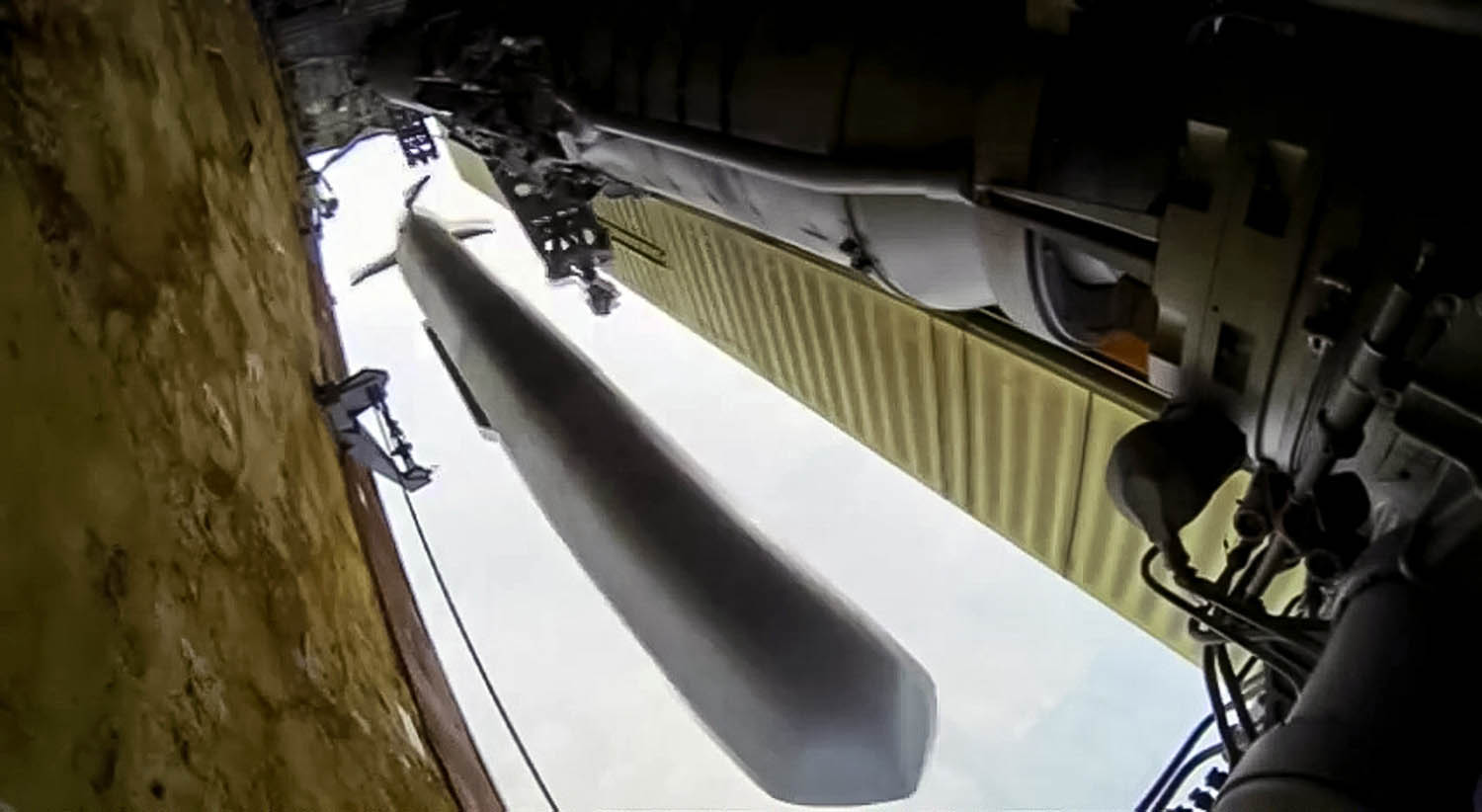
Furthermore, it is uncertain how robust reinforced concrete shelters are when subjected to a direct impact from a cruise or ballistic missile carrying a 480-500 kg warhead.
The Russian Kinzhal hypersonic missiles, capable of penetrating concrete structures and representing a challenging target for air defense systems, also continue to pose a significant threat.
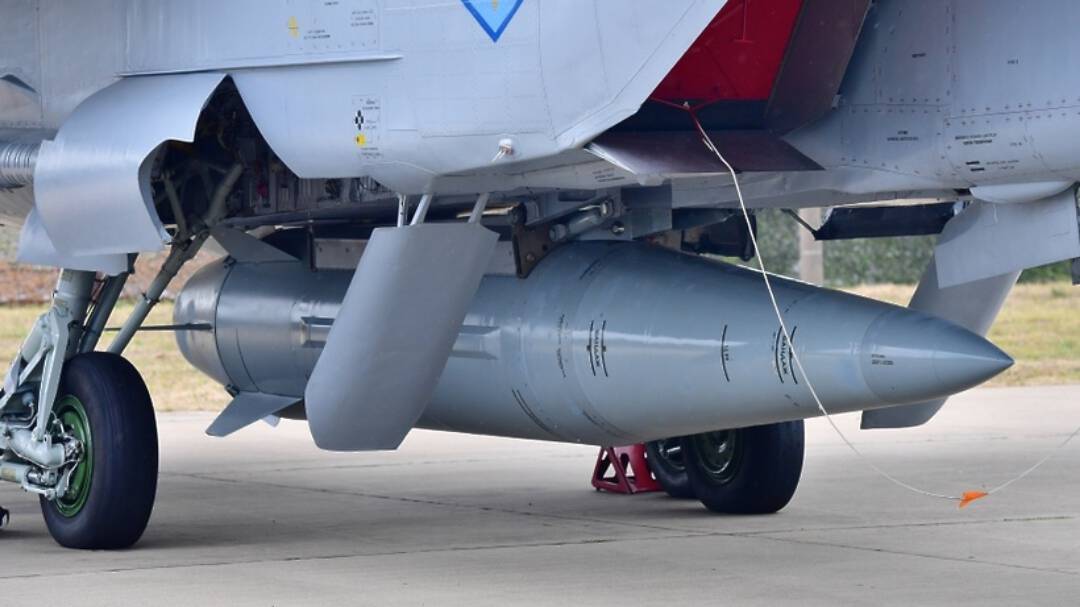
As an example, on August 11, 2023, the Russian forces launched four Kinzhal missiles with the intent to strike the Ivano-Frankivsk region, including a military airfield where young pilots were undergoing training in Europe at the time. Yurii Ihnat, the spokesperson for the Air Forces of the Armed Forces of Ukraine, made this announcement.
He stated, “This marks yet another attack using Kh-47 missiles by the terrorists. These missiles were aimed at military airfields, which have been within the enemy’s sights for many months… This time, it’s the Ivano-Frankivsk region and our youth, our young pilots, who are about to undergo their training.”
Ihnat added that one missile was intercepted over the Kyiv region, but all the Russian Kinzhals were directed toward the Ivano-Frankivsk region.

Note that these missiles can only be shot down by modern Western air defense/missile defense systems. The Patriot SAM, which Ukraine has received from the United States, has proven capable of such interceptions. However, there are still very few of these systems available to provide adequate cover for critical facilities throughout the country.

For obvious reasons, the Ukrainian military does not disclose details about the measures they take to minimize the possibility of Russian strikes on important military and civilian targets.
However, according to the Commander of the Air Force, General Mykola Oleshchuk, it is known that Ukrainian military aviation follows the dispersal principle. In other words, aircraft constantly change their airfields, relying on intelligence data before a possible strike, so that the enemy cannot detect their exact location.
Additionally, to deceive the enemy, mock-ups or decommissioned aircraft can be used. This can lead the Russians to expend missiles on these decoys, or they may have difficulty accurately determining the location of operational aircraft performing combat missions.
The threat of strikes on airfields is not limited to Ukraine. In recent months, the Russian army has lost several aircraft as a result of Ukrainian drone strikes on air bases deep in Russia.
In the Novgorod region on August 20, at the Soltsy air base, at least one Tu-22М3 strategic bomber was completely destroyed.
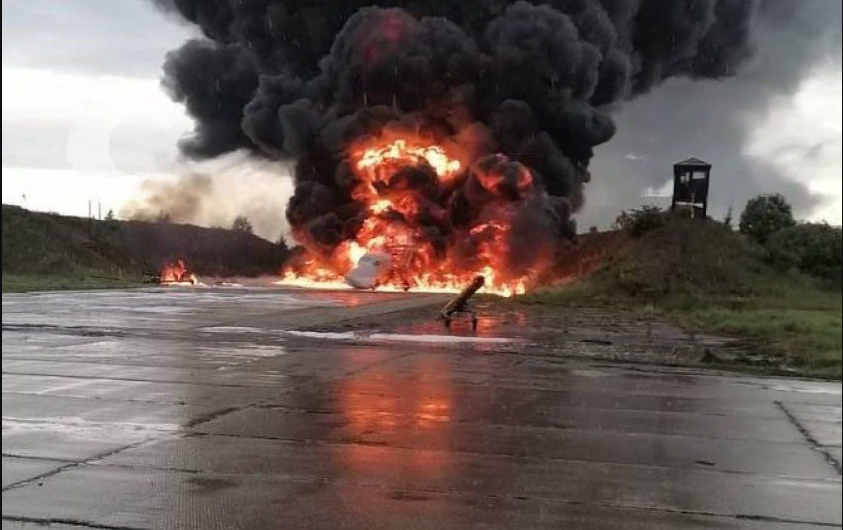
Later, on August 30, four Il-76 military transport aircraft were hit at the airfield near Pskov, at least two of which were completely destroyed.

Therefore, the Russians are also trying to counteract such threats by coming up with various ways, the effectiveness of which has not yet been confirmed.

In particular, Russia’s military covers its tactical aircraft with car tires to protect them from drone attacks.

This practice was first seen in satellite imagery in August. Then bombers were spotted at strategic aviation airfields in the deep rear of Russia, which were also covered with car tires.
The Russians also developed new shelters to protect against attacks by Ukrainian drones. It can be used for almost all types of Russian tactical aircraft and some types of helicopters.

Most likely, such protection without an additional protective surface will not be able to prevent damage by a drone with a HE-Frag warhead.
Підтримати нас можна через:
Приват: 5169 3351 0164 7408 PayPal - [email protected] Стати нашим патроном за лінком ⬇
Subscribe to our newsletter
or on ours Telegram
Thank you!!
You are subscribed to our newsletter